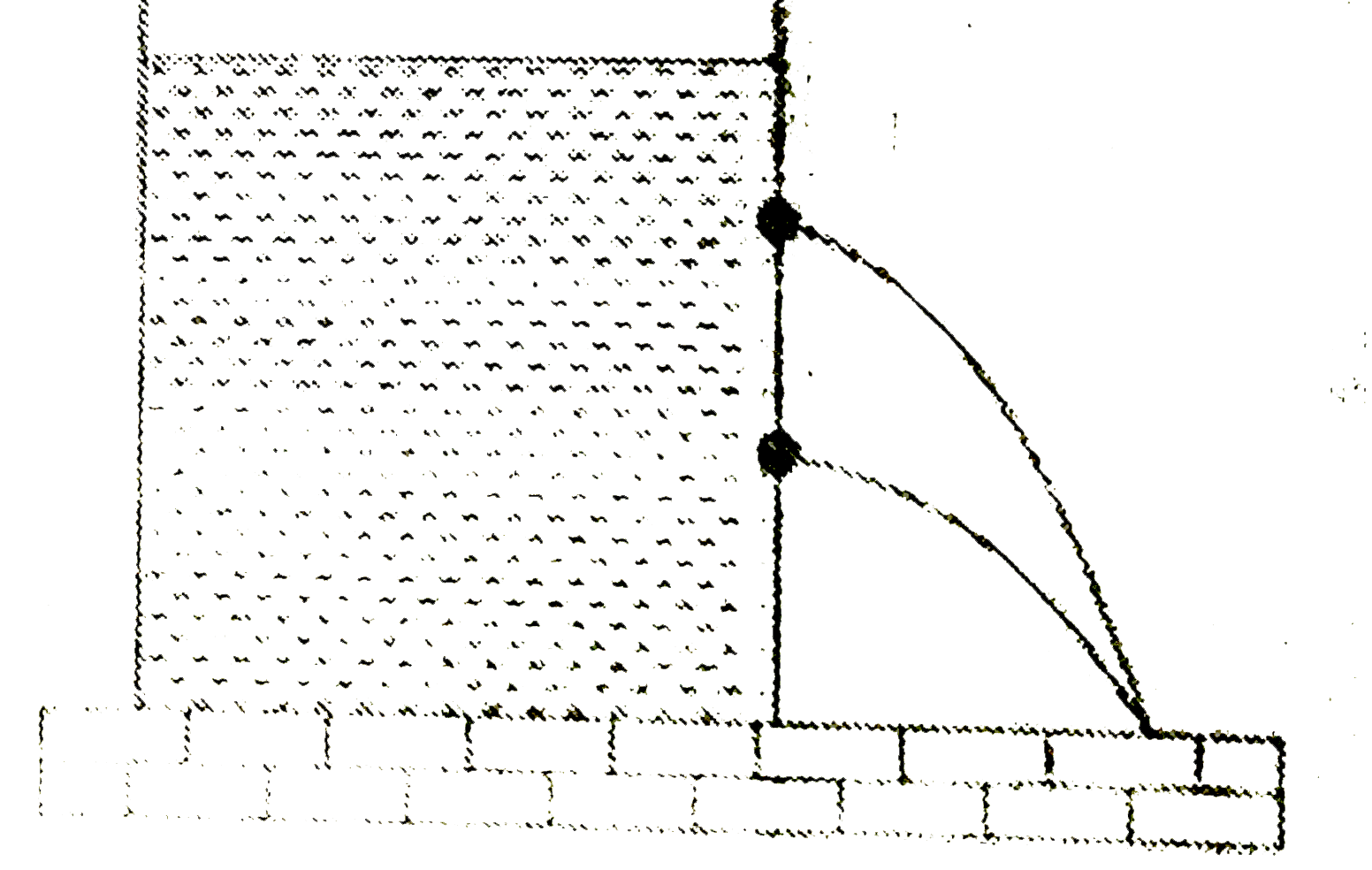An open vessel containing the liquid upto a height of 15 m. A small hole is made at height of 10 m from the base of the vessel then the initial velocity of efflux is (g = 10 m/s2)
1 m/s
10√2ms
5 m/s
10 m/s
The correct Answer is:D
To solve the problem of finding the initial velocity of efflux from a hole in an open vessel, we can use Torricelli's theorem. The theorem states that the speed of efflux of a fluid under the force of gravity through an opening is given by the equation:
v=√2gh
Where:
- v is the velocity of efflux,
- g is the acceleration due to gravity,
- h is the height of the liquid column above the hole.
1. Identify the height of the liquid column above the hole:
- The total height of the liquid in the vessel is 15 m.
- The height of the hole from the base of the vessel is 10 m.
- Therefore, the height of the liquid column above the hole is:
h=Total height−Height of the hole=15m−10m=5m
2. Substitute the values into the formula:
- We know g=10m/s2 and h=5m.
- Now, we can substitute these values into the equation for velocity:
v=√2gh=√2×10m/s2×5m
3. Calculate the value inside the square root:
- First, calculate 2×10×5:
2×10×5=100
4. Take the square root:
- Now, we find the square root of 100:
v=√100=10m/s
5. Final answer:
- The initial velocity of efflux is:
v=10m/s
Summary:
The initial velocity of efflux from the hole in the vessel is 10m/s.
- v is the velocity of efflux,
- g is the acceleration due to gravity,
- h is the height of the liquid column above the hole.
- The total height of the liquid in the vessel is 15 m.
- The height of the hole from the base of the vessel is 10 m.
- Therefore, the height of the liquid column above the hole is:
h=Total height−Height of the hole=15m−10m=5m
- We know g=10m/s2 and h=5m.
- Now, we can substitute these values into the equation for velocity:
v=√2gh=√2×10m/s2×5m
- First, calculate 2×10×5:
2×10×5=100
- Now, we find the square root of 100:
v=√100=10m/s
- The initial velocity of efflux is:
v=10m/s
The initial velocity of efflux from the hole in the vessel is 10m/s.
Topper's Solved these Questions
Similar Questions
In a vessel of water a hole is made at a depth of 3.5 m from the free surface. What would be the velocity of efflux ?
View SolutionA liquid of density ρ=ρ0[1+αy] is stored in a container where y is the distance from the liquid surface and α=23m−1. A small hole is made at the bottom of the container find nearest integer of velocity of efflux (in m/s) when the liquid height is 1 m. Assume flow is laminar (g=10m/s2)
View Solution
Knowledge Check
In a vessel containing water, a hole is made at a depth of 0.10 m from the free surface. What would be the velocity of efflux ?
A14m/sB4m/sC20.8m/sD1.4m/sA tank, which is open at the top, contains a liquid up to a height H. A small hole is made in the side of the tank at a distance y below the liquid surface. The liquid emerging from the hole lands at a distance x from the tank :
 AIF y is increased from zero to H, x will first increase and then decreaseBx is maximum for y=H/2CThe maximum value of x is HDThe maximum value of x will depend on the density of the liquid
AIF y is increased from zero to H, x will first increase and then decreaseBx is maximum for y=H/2CThe maximum value of x is HDThe maximum value of x will depend on the density of the liquidIn a container, filled with water upto a height h, a hole is made in the bottom. The velocity of water flowing out of the hole is
Aproportional to hBproportional to h1/2Cproportional to h2Dindependent of h
A body is thrown horizontally from the top of a tower of height 5m. It touches the ground at a distance of 10 m from the foot of the tower. The initial velcotiy (in m/s) of the body is (g=10ms−2)
View SolutionAn open vessel contains water upto height 50 cm in it. What is the velocity of efflux through an orifice at height 30 cm above the bottom level ? [Take g = 10 m/s2]
View SolutionA body of mass 2 kg is dropped from rest from a height 20 m from the surface of Earth. The body hiys the ground with velocity 10 m/s, then work done (g=10m/s2)
View SolutionIn a cylindrical vessel containing liquid of density ρ, there are two holes in the side walls at heights of h1 and h2 respectively such that the range of efflux at the bottom of the vessel is same. The height of a hole, for which the range of efflux would be maximum, will be –

View SolutionIn a cylindrical vessel containing liquid of density ρ there are two holes in the side walls at heights of h1 and h2 respectively such that the range of efflux at the bottom of the vessel is same. The height of a hole for which the range of efflux would be maximum, will be

View Solution
